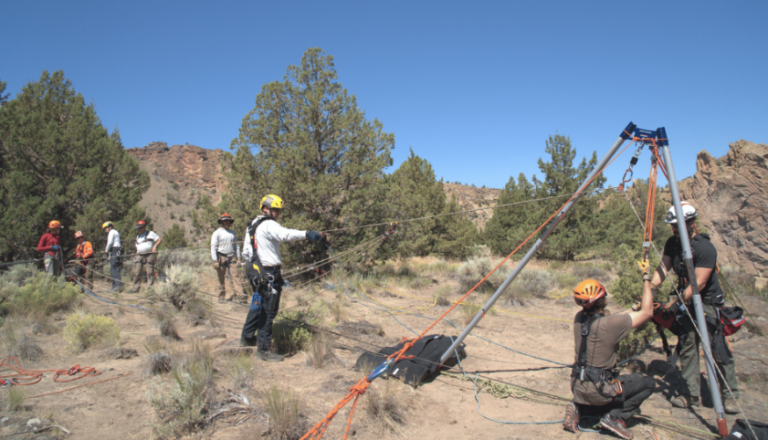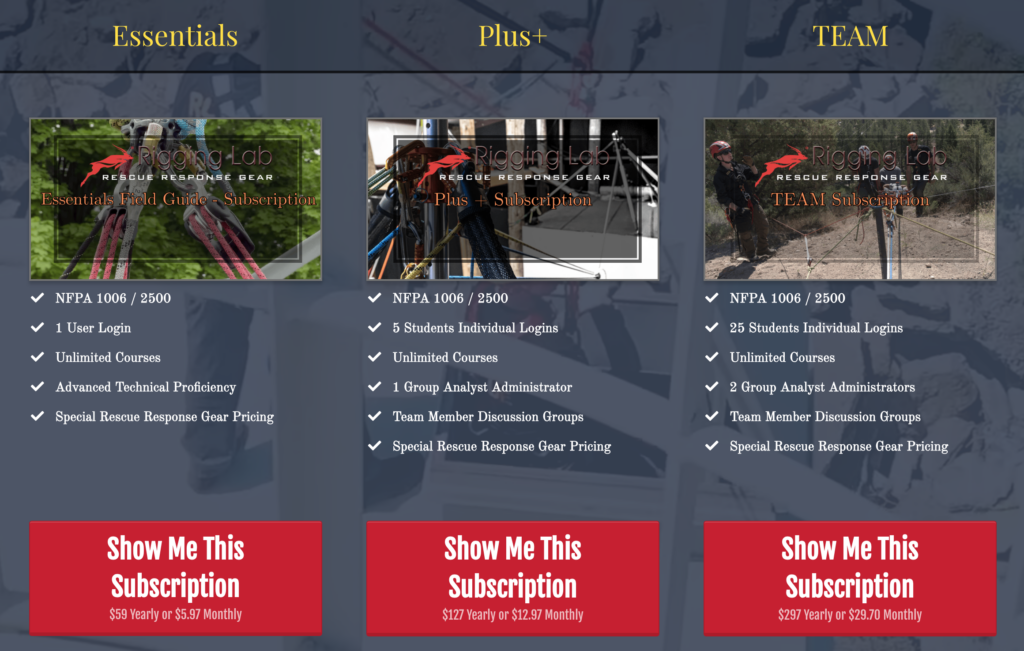Metacognition, Knowledge, and Perception in Rigging and Rescue Operations
Trigger Warning! – This course (to some) reads like the Tao Te Ching or Ancient Proverbs. Leadership is not solely achieved through age, promotions, or certifications – although these elements may be part of the leadership journey. True leaders will see authority in the lowliest of people and events, and the great ones will acknowledge them immediately and make accommodations accordingly.
Contents of this Course
- Beyond What We Think
- Elements of Thinking Beyond
- Leadership and Team Building
- Leadership Through Your Response
- Your Mission Statement Sets The Marching Orders For Everyone
Let’s Jump In!
Knowledge and Perception are actual, factual, spiritual, and human. How this applies to us must apply to our rigging, because “rigging in the hands of a knowledgeable and perceptive team can move mountains.”
Ice Breaker: Thinking Beyond Our Thoughts
The goal of “thinking beyond our thoughts” or metacognitive strategies is to help us become comfortable with developing strategy. Metacognition is the ability to think about thinking. It’s a way of monitoring your own learning and understanding, and it helps you develop strategies to learn more effectively.
Metacognitive thoughts can be conscious or unconscious. Conscious metacognition happens when you deliberately reflect on your own thinking processes. Unconscious metacognition is automatic – it happens without any conscious effort on your part. Both types of metacognition are important because they help you become more aware of how you learn and what works best for you.
By metacognitively monitoring our own learning, we can become more aware of how we best learn and remember new information. This, in turn, can help us become more efficient learners.
Three Steps to Metacognitive Monitoring
- Self-assessment: Step back and ask yourself how well you understand the task at hand and what strategies might be useful.
- Strategy selection: Choose the best strategy for the task at hand.
- Reflection: Check how well the chosen strategy worked and whether it needs to be adapted.
Humans are complex beings that interact with the world around them in myriad ways. To understand how humans function within systems, we must first metacognize and examine our own cognitive processes. Only then can we begin to unravel the complexities of human interaction.
Why is This Important?
Metacognitive processing allows us to better understand our own thoughts and how we are thinking. This can help us to better regulate our thoughts and emotions, as well as improve our thinking and problem-solving skills. Metacognitive processing can also help us better understand others by allowing us to see their thoughts and emotions in a clearer way.
Believing, knowing, thinking, and understanding all have gradients. In the classroom, for example, an instructor might demonstrate or teach students a typical mechanical advantage system; to the fire guy, this might look one way, and to a search and rescue member or mountain rescue team, it might seem like something else. Both are intended to make work easier.
Metacognitive processing is important because it allows individuals to reflect on their own thinking and understand how they learn. This is important for fire departments, search and rescue units, and industry rescue teams. They need to be able to quickly learn new tasks and procedures, and metacognitive processing can help them do this more effectively. Metacognition can also help firefighters avoid making mistakes during emergencies, as they will be able to better assess the situation and make decisions accordingly.
Awareness Level 1: Knowledge & Perception – Rigging Lab Academy
Something to Consider:
Angles of articulation, deflection, resultants, force vectors, and loss or gain of efficiency all play a part in building reliable, effective, and appropriate systems. Notice I say “systems”. We should be thinking systems as well as building systems.
Here’s the point as a reminder of what was stated above: the goal of “thinking beyond our thoughts” or metacognitive strategies is to help us become comfortable with developing strategy.
When the aforementioned is in place, we automatically increase our learning while focusing our attention and derive meaning when evaluating an outcome. We don’t think about certain skills while performing them yet if asked “what we are doing”, we can accurately describe our thought processes, which drive our strategies and tactics.
Some Types of Metacognitive Knowledge Include:
- Content Knowledge (Declarative Knowledge): Understanding one’s capabilities, such as a student evaluating their knowledge of a subject in a class. It’s notable that not all metacognition is accurate. Studies have shown that students often mistake a lack of effort with understanding in evaluating themselves and their overall knowledge of a concept. Also, greater confidence in having performed well is associated with less accurate metacognitive judgment of performance.
- Task Knowledge (Procedural Knowledge): How one perceives the difficulty of a task, including the content, length, and type of assignment. Again, the accuracy of this knowledge is skewed as students who thought their way through seemed to perform worse on evaluations, while students who were rigorously and continually evaluated reported not being as confident but still did better on initial assessments.
- Strategic Knowledge (Conditional Knowledge): One’s capability for using strategies to learn information. Young children are not particularly good at this; it is not until students are in upper elementary school that they begin to develop an understanding of effective strategies.
Leadership and Team Building
“Leadership is the key to an extravagant team.” This statement is not overly embellished or any sort of hyperbole. We’ll be covering a lot in the next number of chapters; however, to start things off, let’s talk about safety and working well with others (agencies).
Training Safety
Fear is an emotion that is induced in response to a perceived threat. It can be categorized as both a feeling and a physiological response. Fear is often associated with the “fight or flight” response, which refers to the body’s instinctual reaction to danger. When a person experiences fear, their heart rate and blood pressure increase, and they may experience feelings of anxiety or terror.
Height can be a precarious place to be, and many people feel fear when working at height. This is understandable, as there are many dangers that come with working in such a position. Without the proper training and safety equipment, it is easy to lose your balance and fall.
Fear can often keep people from pursuing careers that involve working at height, such as construction or engineering. However, with the proper training and equipment, this fear can be overcome. There are many courses available that teach how to work safely at height, but it takes more than just “how” to work through any sort of “fear”. As a team member, this needs to be understood… no one is the same and all function differently.
Metacognitive processing is important because it allows us to step back and reflect on our own thoughts and feelings. This helps us to understand why we react the way we do to certain situations, and it gives us the ability to make better decisions in the future. Metacognition also allows us to better understand others by seeing things from their perspective. This can help to build stronger relationships and resolve conflicts more effectively.
With the proper training and precautions, it is possible to work safely at height. By overcoming your fear of height, you can pursue a career that involves working in a challenging and rewarding environment.
Problem Solving
Enhancing team collaboration allows teams to be more effective by promoting metacognition. Metacognition is the ability to think about one’s own thinking, and it helps individuals learn from their mistakes and become better problem-solvers. When team members can reflect on their own thought processes and discuss them with their teammates, they can improve their collaborative problem-solving skills. This makes them more effective at working together and completing tasks.
Multi-Agency Responses
Due to budgets, cutbacks, and a simple lack of trained professionals (paid or unpaid), sharing district boundaries and responsibilities can be hard or difficult depending on the leadership and training.
When working rescue calls with another agency, there are pros and cons to consider. On the one hand, having another agency present can provide training and support that may be lacking when working alone. On the other hand, fear of working with other agencies can lead to tension and conflict on the scene. Additionally, working at height with other agencies can be dangerous if proper safety protocols are not followed.
When working rescue calls with another agency, there are a few safety considerations to keep in mind. First and foremost, training is essential. Make sure that all members of your team are familiar with the procedures and protocols of the other agency. Secondly, fear can be a dangerous thing. It can lead to hesitation and mistakes. Make sure that everyone on your team is focused and ready to work when responding to a call. Finally, working at height can be dangerous. Make sure that all members of your team are properly equipped and trained to work safely at height.
Always be on the same page with the partnering agency. Even if there is a lack of agreement, knowing the other team’s SOP is critical. Remember, it is never about “you”, rather it is always about “them”.
Safety Starts with Knowing the Plan and Who is in Charge
When working with another agency, it is important to know who is in charge. This ensures that everyone is on the same page and that the rescue goes as smoothly as possible. It is also important to know the plan for the rescue. This helps to minimize confusion and ensures that everyone is aware of what needs to be done.
It’s important for agencies to work together during rescue calls. This helps ensure that everyone is on the same page and that the rescue is carried out as safely and efficiently as possible. To make sure that things go smoothly, agencies often hold “tailgate planning meetings” before deployment begins. This allows everyone to discuss the plan and make sure everyone is on the same page. It also allows them to identify any potential problems ahead of time and address them. This can help reduce the amount of fear and anxiety that people may feel during a rescue.
A team’s SOPs (Standard Operating Procedures) must have within it, a guideline as to how things will roll out with another team and what the default operations will be until a formal leadership and plan is created.
Peace on your Days
Lance










